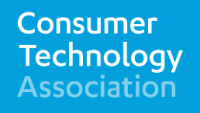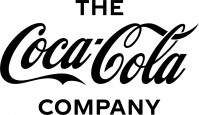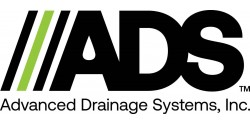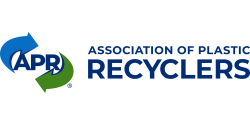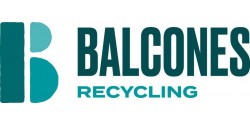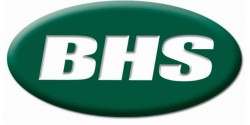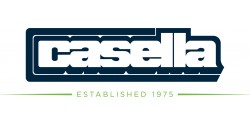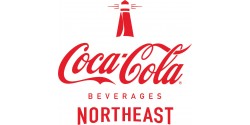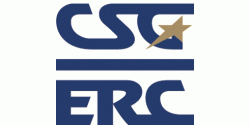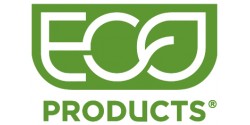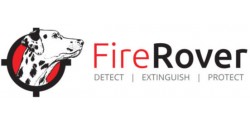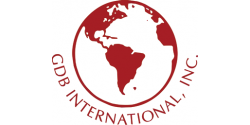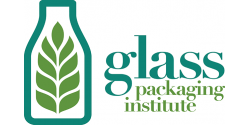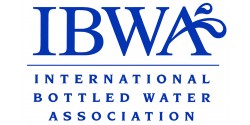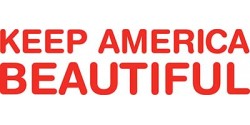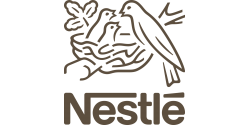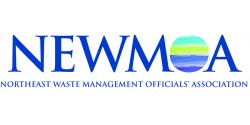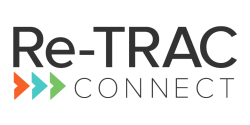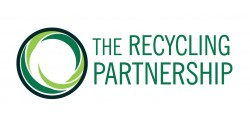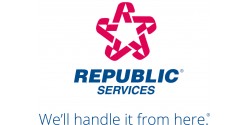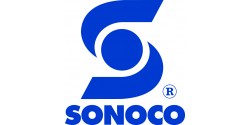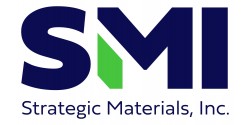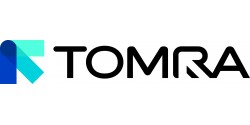March 2017
New & Renewing Members
Renewing Distinguished Benefactor
Renewing Sustaining Member
New Supporting Member
Renewing Supporting Member
Member Spotlight - Strategic Materials
NERC News
- Good Things Come in March - NERC’s Spring Conference, March 15 - 16
- Snapshots of NERC's 30 Year History: NERC’s Advisory Membership Program
- Reminiscences - More Quotes from Friends in Honor of 30 Years
- NERC Profiled in Vermont Newspaper
- NERC History Web Page Updated
- Building Resiliency in Food Recovery – Free Webinar
- NERC Blog Worth Repeating: The Value of the U.S. Environmental Protection Agency
State Updates
VERMONT
Advisory Member Updates
- Carton Recycling Celebrates 60% Household Access Milestone
- CSWD Publishes Fiscal Year 2016 Annual Report
-
Highlights on CCNNE’s Sustainability Program & Community Events in 2016
New & Renewing MembersMembership is key to NERC's regional and national commitment to sustainable materials management. We are delighted to thank renewing Distinguished Benefactor Panasonic, as well as renewing Sustaining Member American Forest & Paper Association (AF&PA). We also welcome new Supporting Member BHS-Sonthofen Inc. and Renewing Supporting Member Local Search Association.
To see a complete listing of NERC's Members and Supporters, as well as the benefits of membership, visit the NERC Advisory Membership web page.
The broad spectrum of interests represented by NERC's Advisory Members, Individual Supporters, and Board Members and their willingness to participate significantly contribute to the unique and important role that NERC plays in recycling in the region.
For more information, contact Lynn Rubinstein, Executive Director.
Member Spotlight - Strategic Materials
Got Glass?
Strategic Materials has been a familiar name in glass recycling for over a century; in fact, the company got its start in 1896 as the Bassichis Company. Eventually, it was purchased by Allwaste Recycling, and it continued to grow and innovate. Over the decades, Strategic Materials purchased many regional glass recyclers and became the first recycled glass processor with a nationwide reach. In 1994, parent company Allwaste spun off Strategic Materials, and it became an independent company. According to the Glass Packaging Institute’s North American Glass Recycling (Processor) List, Strategic Materials has indeed become the leading glass recycler in North America, with nearly 50 plants located in the United States and Canada.
Recycling Earth’s Resources through Team Work
Glass is made from all-natural sustainable raw materials. Glass is also 100% recyclable and can be recycled infinitely without loss in quality or purity. There are substantial environmental benefits associated with recycling glass, including energy savings.
Strategic Materials prides itself in knowing that its corporate foundation is based on saving natural resources by recycling glass and plastic. It strives to do so by being the “most efficient provider” of recycled materials to industrial markets. The company also has as a core value the goal of investing in its employees and recognizing that the company’s success depends on team work and customer support.
Joining NERC as an Advisory Member is a way for the company to promote recycling and its core values to new audiences. “Recycling is facing some tough times,” Curt Bucey, Executive Vice President, Strategic Materials, stated. “Markets continue to be down. With the rise of single-stream recycling, there is growing concern over glass contamination. Strategic Materials is positioned to assist companies and communities to address these challenges. Together we can find solutions to improve glass and other materials recycling.”
A Diversity of Markets
Strategic Materials is capable of processing most types of glass, including: bottle, plate, automotive, colored, pharmaceutical, soda lime, and borosilicate.
Once processed, recycled glass can be used to manufacture an array of products—containers, fiberglass, highway beads, glass abrasives, decorative glass, glass fillers, and other specialty glass. Through technological innovation, a strong knowledge base, and employee dedication, Strategic Materials has the capabilities to provide glass that can fulfill any industry specification.
Strategic Materials also sells recycled plastic resin through its NexCycle Division.
Lean Fundamentals at Work
The Strategic Materials Operating System (SMOS) is built on a broad application of lean fundamentals and Six Sigma tools. Strategic Materials uses these principles to drive its business success and maintain a competitive advantage. The company’s SMOS consists of 12 elements that measure its production system, management system, and organizational design, ultimately focusing on both application and human interaction.
The foundation of the SMOS is to focus on “standard work” in company operations: its operators and processes, including preventative maintenance and 5S (a method to engage people through the use of 'Standards' and ‘Discipline'). Improved best practices are retained and then incorporated in other plants. Virtual metrics and tracking are employed to improve information availability and accuracy.
Strategic Materials also has a goal to train and certify more Lean Excellence Blackbelts. These efforts focus on Lean Strategy and methodology—Excellence in Product, Process, People and Customer, as well as suppliers and external partners. In its efforts to sustain Lean Culture and pursue excellence, the SMOS incorporates a goal of developing more formal mentoring and coaching within Lean Six Sigma (a set of techniques and tools for process improvement). It also pledges to integrate customers and suppliers into the operating system.
Glass at a Crossroads
Around the country glass recycling has sparked numerous discussions. As commodity prices across the recycling spectrum have fallen, so too has glass. With tight markets, quality concerns are on the rise. Issues around glass contamination in single stream recycling systems—glass shards in paper and other materials, as well as paper contamination in glass—have been increasing. Also, end markets for glass are limited in many parts of the country.
Glass remains an important component of consumer packaging. Strategic Materials is well positioned to address the contamination and market issues now being faced in glass recycling. Through improving technologies and processing, the company can continue to meet the needs of recyclers and glass product manufacturers.
NERC News
Good Things Come in March - NERC’s Spring Conference, March 15 - 16
This month has two good things to look forward to—the beginning of Spring and NERC’s Conference—Full Speed Ahead! Both are predicted to bring great results, so get ready for your trip to Vermont.
We know you have a lot of choices competing for the funds you set aside for attending events. Here's some things Conference attendees say about NERC’s events that we think will make your decision easier:
“The NERC conference provides a great forum for discussing critical and timely issues. And as a regional conference, there is ample opportunity to really connect with peers,” says Peter Engel of Kessler Consulting, Inc.
Jaclyn Hochreiter, Addison Solid Waste Management District says, “I have been to many conferences, and know that conference burn-out is real, but I have to say that being at NERC(‘s Conference and being) surrounded by thoughtful folks who are passionate about finding sustainable solutions for resource recovery is so refreshing and energizing. Looking forward to the next NERC conference!"
Be sure to join us on March 15 – 16 at the Sheraton Burlington Hotel in Burlington, Vermont for one and a half days of in-depth discussions about how we can move through today’s barriers for increasing recycling and diversion rates. Some of the things you’ll find at NERC’s Conference include:
- An Agenda that includes topics identified by NERC’s audience as being the most critical industry issues.
- Presenters that are experts in understanding and implementing strategies for increasing the diversion of waste materials.
- A good mixture of sessions, networking time, and social event that allows you to network with the presenters and attendees.
- Affordable rates at a hotel that is recognized by the Vermont Green Business Program for its environmental stewardship (i.e., recycling, organics management, green cleaners, waste minimization, and energy and water conservation).
Conference Dates: March 15 – 16, 2017
Conference Location: Sheraton Burlington Hotel in Burlington, Vermont Book your reservation online for NERC’s block rate of $129.
Gold Sponsors
 |
Bronze Sponsors
Contact Mary Ann Remolador, NERC's Event Organizer, if you have any questions about the Conference.
Snapshots in NERC's 30 Year History: NERC’s Advisory Membership Program
During the first decade of its existence, when the Northeast Recycling Council was a project of the Council of State Governments—Eastern Regional Conference, funding for its many  projects came primarily from U.S. Environmental Protection Agency (EPA) grants. By the mid-1990s, however, NERC partnered with major industry users of recycled paper, such as the Newspaper Association of America (NAA, now the News Media Alliance), in an ambitious project designed to increase recycled content in newspapers and other paper products.
projects came primarily from U.S. Environmental Protection Agency (EPA) grants. By the mid-1990s, however, NERC partnered with major industry users of recycled paper, such as the Newspaper Association of America (NAA, now the News Media Alliance), in an ambitious project designed to increase recycled content in newspapers and other paper products.
In 2000, after NERC had become an independent non-profit organization, it built upon its commitment to public-private dialogue, such as that with NAA and the newspaper industry, to create an Advisory Membership program. The result was an expanded opportunity for continued conversation and a diversification of funding sources. Many of the earliest Advisory Members, in fact, were partners in the recycled paper initiative; Connecticut Daily Newspapers Association and Philip Morris Management Corporation joined NAA as NERC Advisory Members at about that time.
The Advisory Membership program has attracted a highly diverse group of organizations. Some joined to promote their recycling business, others to learn more about how to start recycling at their business. Noteworthy businesses that were among the first Advisory Members included Summit Metals Recovery Corporation (now Summit Metals Corporation), whose steel fabrication, welding, machining, and laser cutting produce prototypes to meet short and long run production requirements. Another was American Ref-Fuel Operations of SEMASS (now Covanta Company of SEMASS, a subsidiary of Covanta). Covanta operates a global network of Energy-from-Waste and material processing facilities. Consolidated Edison, Inc., or “ConEd,” another early Advisory Member, is one of the largest investor-owned energy companies in the United States.
Realizing the networking benefits of joining NERC, as well as the help its expertise in resource management can provide, major industry trade associations also became early Advisory Members. Established in 1988, the Steel Can Recycling Institute, formed to promote steel can recycling, joined in 2000. When the association expanded its focus to  encompass the recycling of all steel products, it changed its name to the Steel Recycling Institute. Another early Advisory Member, the American Chemistry Council, (originally the American Plastics Council) represents a diverse set of companies engaged in the business of
encompass the recycling of all steel products, it changed its name to the Steel Recycling Institute. Another early Advisory Member, the American Chemistry Council, (originally the American Plastics Council) represents a diverse set of companies engaged in the business of  chemistry, including plastics. Both trade associations have remained Advisory Members to this day.
chemistry, including plastics. Both trade associations have remained Advisory Members to this day.
In addition to business and industry representatives, state recycling associations and other recycling non-profit organizations were also among the first NERC Advisory Members. One such organization was the Association of New Jersey Recyclers, a non-profit, non-partisan network established to serve as the voice of recycling in New Jersey. Another was the Professional Recyclers of Pennsylvania (PROP). An organization of public and private sector recycling professionals who serve the commonwealth of Pennsylvania, PROP brings together a network of recycling professionals who strive to ensure that materials in the Pennsylvania waste stream are optimally recycled.
Also joining in the early 2000s, the Maine Resource Recovery Association (MRRA) helps Maine communities and businesses implement environmentally sound and economically sustainable recycling and solid-waste management protocols. And the Northeast Resource Recovery Association (NRRA) develops cooperative purchasing and marketing programs, provides educational and networking opportunities, and offers technical assistance.
The first state agency to join NERC as an Advisory Member was the Rhode Island Department of Environmental Management. The Agency serves as the chief steward of the state’s natural resources; it protects, restores, and promotes the State’s environment, and regulates facilities that receive solid, hazardous and medical waste.
Other early Advisory Members include Resource Recycling, Inc., BioCycle Magazine, and the National Recycling Coalition.
Many years after the inauguration of NERC’s Advisory Membership program, its Members are more vital an asset to the organization than ever. With a current count of more than 70, the Advisory Members have been increasingly valued by NERC for the contributions they make to the organization. Advisory Members participate in shaping the agendas of NERC conferences, and join webinars, workshops, and other events. They are offered opportunities to write NERC Email Bulletin and blog articles, and are featured in the monthly Advisory Member Spotlight. They have access to NERC’s experienced staff for the sharing of ideas and other consulting opportunities. They share in informative Members-only luncheons at NERC conferences, and network with government leaders, innovators, and business representatives, on subjects relating to cutting edge materials management issues and best practices.
NERC actively invites businesses, corporations, trade associations, non-profits, recycling organizations, solid waste districts, municipalities, and others to become Advisory Members. With changing political climates and funding opportunities, the importance of building this organizational asset and increasing NERC’s Advisory Membership becomes ever more vital.
Interested in becoming a NERC Advisory Member? Click here for more information.
Reminiscences - More Quotes from Friends in Honor of 30 Years
In honor of NERC's anniversary we've been collecting quotes from friends. Here are some received since the January Email Bulletin:
Sharon Yergeau, Former New Hampshire NERC Board Member
Over my many years working on recycling issues at the New Hampshire Department of Environmental Services, my colleagues and I often joked about how recycling is not "rocket science." That's not to say, however, that it's without obstacles. Participation in NERC provided the opportunity to stretch our own very limited resources in supporting local source reduction and recycling through education and technical assistance.
Carey Hengstenberg, Former Vermont NERC Board Member
As a state policy maker, relatively new to the field of waste reduction and diversion, NERC was extremely helpful in helping me to make connections with other states and to better understand how the industry works.
Richard P. Watson, CEO Delaware Solid Waste Authority, Current Delaware NERC Board Member
The Delaware Solid Waste Authority (DSWA) has participated as a Board member of NERC for over six years now and has found our association with NERC to be extremely valuable. The Conferences, in particular, provide an opportunity to network with a wide range of national, regional and local materials management experts who are willing and able to debate on the merits of their views. This balanced and non-partisan forum provides information DSWA uses to help make decisions on how we implement programs such as electronic waste diversion or mattress recycling.
Jerry Powell, Resource Recycling
We longtime trade journalists have always found NERC – its staff, its events and its programs – to be reliable sources of high-quality information on all the key trends affecting materials management. Much of the success of recycling and waste reduction over the years is because of thoughtful leadership, such as that provided by NERC. Congratulations for 30 years!
Steve Rinaldi, New Jersey Department of Environmental Protection, Bureau of Energy and Sustainability
The staff at NERC is great to work with…always friendly and helpful. Thanks for all that you do to promote recycling!
Al Fralinger, PSE&G
Being part of NERC enabled PSE&G to interface with some of the more progressive and supportive state governments of recycling and waste reduction strategies while affording us a forum for sharing of best practices……
David F. Keeling, Director-Recycling, Steel Recycling Institute
Congratulations to NERC during its 30th anniversary yearlong celebration. Thank you to all of the past and present staff members for continuing to bring us together for worthwhile programming and valued networking opportunities through NERC. It has been invaluable to our association and a benefit to the overall steel industry.
John Frederick, Executive Director – IRC Council of Governments (Pennsylvania) & Former Executive Director of Professional Recyclers of Pennsylvania (PROP)
While many others are talking about the challenges confronting the recycling industry and the government agencies tasked with holding it all together, NERC just gets it done. Whether it’s development of resources and fact sheets, marketing initiatives like the Newspaper Publishers Agreement, policy work to advance the interests of the industry, or analyzes to document the economic benefits of recycling, NERC has been getting it done for three decades. And the list goes on… It’s been my pleasure to work with and benefit from the many initiatives NERC has undertaken. Recycling in the Northeast would not be what it is without NERC.
NERC History Web Page Updated
In honor of the 30th anniversary, NERC's history page has been updated. Take a look!
NERC Profiled in Vermont Newspaper
An interview with Mary Ann Remolador, NERC Assistant Director, resulted in a profile about NERC in a Vermont newspaper - Northeast Recycling Council turns 30, takes on new tasks. And, also a photo of the entire staff.
Lynn Rubinstein, Mary Ann Remolador, Athena Lee Bradley holding Zerbina, & Robert Kropp (left to right)
Building Resiliency in Food Recovery – Free Webinar
NERC is hosting a free webinar on March 30, from 1:30 - 3 pm (EST). Building Resiliency in Food Recovery will address the connections between wasted food reduction and food recovery. The webinar will explore building collaboration and support between diverse stakeholders, how to address similar (and dissimilar) challenges in urban and rural environments, and, fostering community empowerment to create and sustain local food systems.
At every step of our food system--growing, harvesting, processing, packaging, transporting, marketing, consumption, and disposal—waste is generated. Meanwhile, in our country, 13 percent of households (15.8 million households) were food insecure in 2015. A more resilient food system involves collaboration between industry, food innovators, and all those along the food value chain. For food purchasers, particularly grocers, institutions, businesses, and households addressing inefficiencies in food handling, production, and consumption can help reduce food waste. A fundamental shift in our collective mindset is also required to address the disconnect between our nation’s food system and the waste created.
Presenters and Topics for the webinar:
- Building Collaboration for the Food Waste Challenge
Elise Golan, Ph.D., Director for Sustainable Development, Office of the Chief Economist, U.S. Department of Agriculture
- The New Food Movement and the Importance of Law and Collaboration
Laurie Beyranevand, JD, Senior Faculty Fellow, Center for Agriculture and Food Systems
Vermont Law School
- Agricultural Surplus Management and Food System Resiliency
Theresa Snow, Executive Director, Salvation Farms
After registering you will receive a confirmation email containing information about joining the webinar.
NERC’s Food Recovery: Food Rescue Innovative Strategies webinar held last November had more than 100 participants, from 21 states, Washington D.C., and one Canadian province. A third webinar on the food recovery hierarchy will be offered later this spring. This webinar series is part of NERC’s Implementing the Food Recovery Hierarchy In Rural Vermont Communities project, funded through a United States Department of Agriculture grant. Following each webinar, recordings and PowerPoint presentations will be posted on the project page.
For more information contact Athena Lee Bradley.
NERC Blog Worth Repeating: The Value of the U.S. Environmental Protection Agency
First published January 24, 2017. Note: Scott Pruitt was confirmed as EPA Administrator by the Senate on February 17 by a vote of 52-46.
The year 1970 was a turning point for our nation’s environment. On January 2 of that year, President Richard Nixon signed the National Environmental Policy Act into law; and on December 2, his administration created the United States Environmental Protection Agency (EPA).
The creation of EPA as an independent agency was the result of a rising tide of concern over our nation’s environment; the first Earth Day was held on April 22, 1970. With strong bipartisan support, legislators convinced the Nixon administration that a single agency was needed; one that would consolidate under a single umbrella a myriad of federal activities—including research, monitoring, standard-setting, and enforcement—to ensure the protection of our nation’s environment.
Looking back from the vantage of today’s fractured body politic, how did such a monumental bipartisan action take place? The nation’s air, water, land, wildlife, and indeed its citizens, were feeling the onslaught of decades of environmental neglect and pollution. Here are just a few examples:
- In June 1969, after decades of industrial pollution being legally piped into it, an oil slick on Ohio’s Cuyahoga River caught fire—and not for the first time.
- Between 1947 and 1977, General Electric (GE) dumped an estimated 1.3 million pounds of polychlorinated biphenyls (PCBs) into the Hudson River.
- Before EPA created the Resource Conservation and Recovery Act of 1976, solid waste was dumped into open trenches and unlined landfills, and often burned.
- The American Bald Eagle, peregrine falcon, osprey, brown pelican, and other birds were being decimated by the widespread use of DDT.
- Acid rain, caused by sulfur dioxide (SO2) and nitrogen oxides (NOx) emissions from power plants, was impacting freshwater systems and reducing fish populations around the country.
- Children and adults were being harmed by high levels of lead in our air (due to lead in gasoline). In 1973, EPA introduced a program designed to gradually reduce lead levels in gasoline, and eliminate its use altogether in 1995. As a result, between 1984 and 1995, airborne lead concentrations throughout the country decreased 89 percent.
- Under the 1976 Toxic Substances Control Act, EPA has compiled an inventory of roughly 84,000 chemicals that have been produced in, or imported to, the United States.
Many Americans have expressed concern over the new Administration’s nomination of Oklahoma Attorney General Scott Pruitt to head EPA. Pruitt has questioned the validity of climate science, stating that the “debate is far from settled.” He has participated in numerous lawsuits filed against the Agency he has been nominated to lead, most recently the Administration’s Clean Power Plan. He has disputed whether toxic mercury is a public health danger and has also disputed as politically motivated EPA’s finding linking hydraulic fracturing with contamination of drinking water resources.
Stated Pruitt, “When you look at the EPA, and the role that it’s played over the last several years, there’s going to be substantial change in that agency. There’s going to be a regulatory rollback.”
Nevertheless, since that first Earth Day and the creation of EPA, concern for the health of the environment is shared by millions of Americans as well as citizens the world over. That concern, and the basic lifestyle changes it has encouraged, are not likely to go away.
Shortly after its formation, EPA hired freelance photographers to capture images relating to environmental problems, EPA activities, and everyday life in the 1970s. The U.S. National Archives digitized more than 15,000 photographs from the Documerica Project, which ran from 1971-1977.
By Athena Lee Bradley (with editorial input from Robert Kropp)
State Updates
VERMONT
Green is for Organics: Voluntary Container Color Standard Recommended
National nonprofit Keep America Beautiful and the United States Composting Council (USCC) have announced that they, along with five other participating nonprofits and government agencies - including the Vermont Agency of Natural Resources, recommend designating green as the voluntary container color standard for organics collection containers.
The voluntary standard has been established to address one of the key barriers to more effective recycling and organics collection, beyond convenience. Key factors supporting the recommendation of green as the preferred container color for organics collection containers are:
1) A distinct, consistent color for organics containers provides a visual cue for program participants that studies indicate will likely increase recognition of the purpose of the container and the quality of recovered material;
2) A distinct color that is different from the color used for trash and recycling collection containers can increase recovery; and
3) Consistency in messaging across jurisdictions – including the use of container color – helps to minimize confusion and contamination.
The initial organizations joining Keep America Beautiful and USCC in recommending this voluntary standard include: the City and County of San Francisco, GreenBlue, National Recycling Coalition, New York State Department of Environmental Conservation, Seattle Public Utilities and the Vermont Agency of Natural Resources. Additional organizations are expected to join the “Organics Collection Container” working group and support adoption of the voluntary standard throughout the year.
“According to the U.S. EPA, food waste makes up 21 percent of municipal solid waste that is landfilled,” said Brenda Pulley, senior vice president, recycling, Keep America Beautiful. “While consumers’ first effort should be to reduce food waste, once the food waste is generated we’ll improve organics collection by taking the simple step of standardizing the color of the organics collection containers. And we’ll have the residual benefit of providing quality feedstock for composting.”
“Education and identification of containers and proper ways of recycling food scraps is critical to one of the compost manufacturer’s biggest challenges: contamination. This project will help to clarify organics containers and capture more organics for composting,” said Frank Franciosi, USCC Executive Director.
Importance of Color
According to an online survey regarding trash and recycling container color, shape and signage, 79 percent of survey participants identified blue containers as recycling bins. Survey respondents were least certain about the color of a compost container – 51 percent selected brown and 41 percent selected green. Brown was also associated with trash for many respondents, suggesting that green may be the most appropriate color for organics collection.
The study was conducted online by Keep America Beautiful in partnership with Monique M. Turner, Ph.D., Associate Professor, Department of Prevention and Community Health, Milken Institute School of Public Health, at The George Washington University, and included 697 participants.
Additional research on color, cognition and recycling, conducted by researchers at the University of Michigan, hypothesized that the visual salience of recycling bins encourages recycling behavior, presumably through a peripheral route of persuasion. In this study, recycling bins and trash bins of the same shape and size were paired as either “Green Recycling Bin/Grey Trash Bin” or “Grey Recycling Bin/Grey Trash Bin.” All bins were labeled as either “Trash” or “Recycle” in black on white background. Forty-eight undergraduate students participated in the study and were randomly assigned to either the high-salience (green/grey) or low-salience (grey/grey) conditions.
Researchers found that:
- 52 percent used recycling bin in the grey/grey condition (signage distinction only); and
- 88 percent used recycling bin in the grey/green condition.
Thus, color can affect the user and consequently trigger the associated desired behavior.
Finally, color can be an important visual cue for communicating a message regarding what the container is designed to be used for. In a branding context, color is often noted as offering “an instantaneous method for conveying meaning and message without words.”
The working group gathered information about color associations adopted in curbside collection programs across the country. It has been noted that green is the most commonly adopted color used for organics collection containers.
For further information about the “Organics Collection Container” working group or the organics collection container standards, contact Keep America Beautiful Senior Vice President/Recycling Brenda Pulley or U.S. Composting Council Director of Education Cary Oshins.
In an another collective effort to support sustainability, waste reduction and zero waste initiatives in the workplace, Keep America Beautiful, USCC and Kimberly-Clark Professional teamed up in 2016 to introduce a free "Guide to Workplace Composting." The guide provides step-by-step instructions and resources to help office buildings, manufacturing facilities, hotels, hospitals, universities and other workplaces divert organic matter – such as food scraps, used paper towels, coffee grounds and coffee filters – from landfills through composting.
Advisory Member Updates
Carton Recycling Celebrates 60% Household Access Milestone
The Carton Council of North America is proud to announce that carton recycling is officially 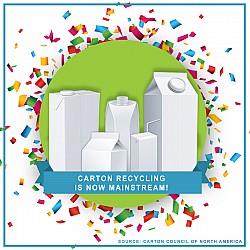 mainstream, with 60 percent of U.S. households able to recycle food and beverage cartons through their local recycling programs. This is an important milestone because food and beverage carton recycling is now available to a substantial majority of consumers, according to the Federal Trade Commission green guidelines.
mainstream, with 60 percent of U.S. households able to recycle food and beverage cartons through their local recycling programs. This is an important milestone because food and beverage carton recycling is now available to a substantial majority of consumers, according to the Federal Trade Commission green guidelines.
“This is an exciting achievement that could not have been achieved without the hard work and collaboration among our partners across the industry,’’ said Jason Pelz, vice president of recycling projects for the Carton Council of North America and vice president, environment, Tetra Pak Americas. “Thanks to the growing list of recycling program coordinators, facility operators and recycling company representatives who recognize firsthand the value of carton recycling, we have been able to achieve this tremendous success and are proud that carton recycling is now considered mainstream.”
The Carton Council will launch a new digital education campaign in February that will provide ways communities can get involved to promote carton recycling in a fun and engaging way. Please email CartonCouncil@fenton.comif you are interested in learning more about the campaign.
The Carton Council continues to leverage the strong foundation built with significant access and remains committed to advancing sustainable carton recycling in the U.S. and growing carton recycling rates. Thank you to all who have supported us on this journey!
CSWD Publishes Fiscal Year 2016 Annual Report
The Chittenden Solid Waste District's Annual Report for fiscal year 2016 offers an overview of CSWD's efforts to fulfill its mission to provide efficient, economical, and environmentally sound management of solid waste generated by the businesses, residents, and visitors of member towns and cities.
Highlights include...
- A waste composition study conducted by CSWD that found that 60% of what Chittenden County residents throw in the trash could be diverted from disposal through existing recycling, composting, and hazardous waste programs.
- Revisions to the CSWD Solid Waste Management Ordinance that include trash disposal bans on asphalt shingles and unpainted/unstained plywood and oriented strand board, adding those materials to the recycling/reuse stream, rather than the landfill.
- A new 5-year strategic plan.
- A nationwide search for a new General Manager to replace Tom Moreau, who retired after twenty-one years of service. Sarah Reeves was hired as the new General Manager in August, 2016.
The FY16 report is a quick read and jammed with great news. For example, here's a glimpse of how much businesses, residents, and visitors in Chittenden County
kept out of the landfill last year:
Blue bin recyclables: 91.4 million pounds. That's a 1.6% increase (or 282,000 pounds) over last FY15.
Food scraps: 9.35 million pounds. That's 40,000 pounds more than last year!
Hazardous waste: Since 1993, we've collected and properly managed over 11.4 million pounds of hazardous waste.
Paint: We recycled 8,364 gallons of latex paint into Local Color paint, which has covered many a living room, barn, house, and shed. That's over 1000 cubic feet of paint. Imagine a cube about as tall as an African bush elephant. That's a lot of paint!
Tires: 528,000 pounds of 'em were collected at our Drop-Off Centers.
Scrap metal: 2.37 million pounds recycled through our Drop-Off Centers.
Clothing & textiles: 276,000 pounds collected for recycling at our Drop-Off Centers.
And tons (literally, tons) more! Check out CSWD's FY16 Annual Report online (scroll down to the Annual Reports section). To conserve resources, the District does not publish hard copies; however, hard copies will be made available upon request.
In 1987, the Vermont Legislature passed Act 78, the state's first solid waste law, which mandated the creation of entities throughout the state to design regional solutions to the solid waste challenges faced by their member towns. All 18 towns in Chittenden County are included in the District. Since 1992, CSWD has implemented regional programs and constructed facilities to meet the goals and mandates of Act 78, Act 148 (enacted in 2012) and those set out in the District Charter, Ordinance, and Solid Waste Implementation Plan.
The Chittenden Solid Waste District sets solid waste policy for all 18 towns and cities of Chittenden County, including Bolton, Burlington, Charlotte, Colchester, Essex Junction, Essex, Hinesburg, Huntington, Jericho, Milton, Richmond, St. George, Shelburne, South Burlington, Underhill, Westford, Williston, and Winooski. Each member municipality appoints a representative to serve on the CSWD Board of Commissioners, which meets monthly.
For more information about the District, please visit the CSWD website and feel free to contact us if you have any further questions.
Coca-Cola of Northern New England – Highlights on CCNNE’s Sustainability Program & Community Events in 2016
For over 40 years, Coca-Cola of Northern New England (CCNNE) has been a part of the community, refreshing the Northeast with classic beverages. Since 2012, CCNNE began expanding their community presence through teaching sustainability. Ray Dube, the Sustainability Manager at CCNNE, now spends over a 100 days each year educating students, organizations and local communities on recycling and how it impacts the Northeast. Since CCNNE goes to so many great events each year, here are a few highlights from 2016.
The number one part of the sustainability program is the booth! The sustainability booth teaches the audience on how everyday materials and items can get transformed into products like teddy bears, sneakers and bridges. Ray Dube not only talks about how the items get transformed, but visually shows the different recycling stages, starting with a plastic bottle to the end result of a Northface jacket. The sustainability booth has traveled a lot of miles and got awarded best booth in 2016 at the NRRA conference. Some fun stops that were made this year includes: Texas Instruments, Raytheon, Dartmouth College, Army Core of Engineers, Plymouth Plantation & Fitchburg State, just to name a few.
Community events are also a great way to connect with so many amazing people. Some various events from 2016 include Special Olympics New Hampshire Summer Games, Made in New Hampshire, Rib Fest, Fisher Cats games, Coastal Arts Festival, Lowell Folk Festival & the Total Life Expo in Mohegan Sun. While participating in these events, CCNNE has connected with great partnering schools for internships and student projects. In summer of 2016, CCNNE brought in an intern from the UNH Carsey School of Social Innovation to help document and share the recycling program by making videos on the company’s YouTube channel. CCNNE also got the opportunity to judge final projects on creating a waste-free campus at Southern New Hampshire University.
Another interesting way of educating is through bottling plant tours in Londonderry, NH. This is where the beverages are produced, packaged & shipped! Local New England schools that visited the production center in 2016 include Central High School, Spaulding High School & the University of New Hampshire. The plant tour gives the students a unique experience on seeing the everyday operations from blowing the plastic bottles in house, seeing the beverages being made in the mixing room, to packaging them for shipment… all while staying sustainably conscious!
2016 marked a huge achievement with the announcement of the Londonderry, NH Bottling Plant becoming landfill free, achieving a 96% recycling rate with the remaining going to a waste to energy facility. Recycling various materials is something CCNNE continues to be aware of, especially since those recycled materials source so many jobs in the Northeast. In connection to the importance of a strong workforce, CCNNE was awarded ‘2016 Company of the Year’ by the Greater Derry Londonderry Chamber of Commerce. This accomplishment was largely due to sustainable efforts, the great workforce at CCNNE and the amazing communities.
CCNNE also got the opportunity to some partake in legislative discussions this year. This included testifying at the Vermont Statehouse, hosting the New Hampshire Speaker of the House for a plant tour, and traveling to Washington DC to showcase the sustainability booth at the Senate House. Another rare experience was Ray Dube having a one on one interview during an on air program for the Bedford, NH Community Television. This allowed great dialogue on recycling & the local roots of Coca-Cola of Northern New England.
With 2016 already closed, CCNNE is looking forward to the future. In late 2017, CCNNE will be undergoing their biggest expansion to date. This includes taking on the remaining New England and upstate New York territory from the Coca-Cola Company, bringing CCNNE more opportunities… particularly meeting so many more great people!
To learn more about Coca-Cola of Northern New England, go to www.cokenortheast.com & connect with them on social media!


